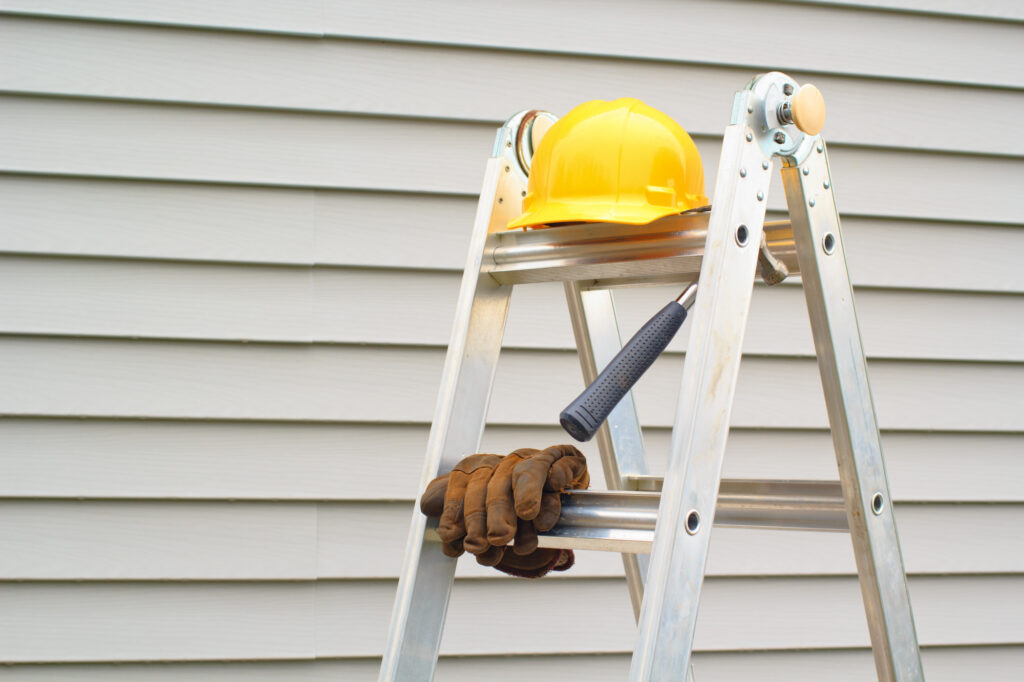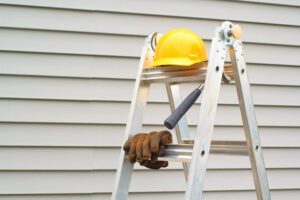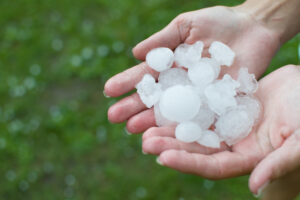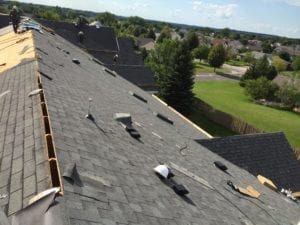Homeowners frequently face siding issues that can undermine structural integrity and curb appeal. Common problems include moisture damage, cracking, and pest infestations. Warping and buckling often stem from improper installation or thermal expansion. Loose or missing panels can arise from severe weather or poor craftsmanship, increasing the risk of moisture infiltration. Furthermore, mold and mildew growth, resulting from untreated moisture, presents health hazards. Regular inspections are essential for early detection and prompt repairs, while high-quality installation practices help prevent future complications. To better understand effective solutions for these issues, exploration of further insights will provide deeper guidance.
What Are the Most Common Siding Problems?
Siding serves as a critical barrier protecting homes from the elements, yet it is not immune to a range of common problems.
Moisture damage can lead to severe issues like rot and mold, particularly in wood materials.
Furthermore, pest control becomes essential as infestations from termites and carpenter ants threaten structural integrity.
Regular inspections and timely repairs can mitigate these common siding issues effectively.
1. Moisture Damage and Ro
Moisture damage is a significant concern for siding, as it can lead to issues such as swelling, rotting, and mold growth.
Homeowners should be vigilant for signs like water stains, peeling paint, and soft wood, which necessitate prompt attention.
Addressing moisture damage involves both immediate repairs and implementing preventive measures to safeguard the home’s exterior.
Signs of Moisture Damage
Identifying the signs of moisture damage is essential for maintaining the integrity of your home’s siding.
Common indicators include:
- Visible water stains
- Bubbling or peeling paint
- Mold and mildew growth
- Warping or buckling of panels
These symptoms of water damage can lead to significant structural issues if left unchecked, emphasizing the importance of regular inspections and prompt action.
How to Fix Moisture Damage
Addressing moisture damage promptly is essential to preserving the integrity of your home’s siding.
Conduct regular inspections to identify early signs of moisture infiltration, such as soft wood or water stains.
Guarantee proper sealing around windows, doors, and seams with high-quality caulk to prevent further issues.
Replace any compromised panels and maintain adequate drainage to direct water away from the siding effectively.
2. Cracking and Splitting
Cracking and splitting in siding are primarily caused by temperature fluctuations and external impacts, which can weaken the material over time.
Identifying these issues early is vital, as visible cracks and gaps can lead to moisture infiltration and further damage.
Effective repair methods, such as using exterior-grade caulk for minor cracks or replacing severely damaged panels, are essential for maintaining the integrity of the siding.
Causes of Cracks
Numerous factors contribute to the development of cracks and splits in siding materials, greatly impacting both aesthetics and structural integrity.
Common causes include:
- Temperature fluctuations leading to cracking
- Improper installation creating stress points
- External impacts from hail or branches
- Lack of maintenance allowing minor issues to escalate
Addressing these factors promptly can help maintain the longevity and appearance of your siding.
Repairing Cracked Siding
Repairing cracked siding is essential to maintaining both the aesthetic appeal and structural integrity of a home.
Small cracks can be effectively addressed with exterior-grade caulk or specialized repair kits, while extensive damage may require panel replacement.
To prevent future cracked siding, guarantee proper installation techniques are utilized, allowing adequate space for material expansion and contraction, thereby mitigating further issues.
Regular inspections can help identify problems early.
3. Warping and Buckling
Warping and buckling of siding are primarily caused by improper installation, excessive heat, and moisture exposure, which restricts necessary expansion.
Identifying the root causes of these issues is vital for implementing effective solutions.
Why Siding Warps
Although siding is designed to withstand various environmental conditions, it can warp or buckle due to several factors, primarily stemming from improper installation and moisture exposure.
Common siding issues include:
- Inadequate allowance for thermal expansion
- Poor drainage leading to moisture infiltration
- High temperatures exacerbating vinyl warping
- Insufficient ventilation trapping heat and moisture
Identifying these causes early can prevent further warping and protect your home’s integrity.
Solutions for Warped Siding
Addressing warped siding promptly is vital to maintaining the structural integrity and aesthetic appeal of your home.
First, guarantee proper installation techniques are applied, allowing for adequate expansion space.
Regular inspections can help detect early signs of warping, while severely warped panels may require replacement to prevent moisture infiltration.
Timely repairs and maintenance are essential in preventing further issues with warped siding.
4. Pest Infestations
Pest infestations pose a significant threat to siding, particularly from species such as termites and carpenter ants.
Signs of damage, including small holes and the presence of sawdust, should prompt immediate action to prevent further deterioration.
Implementing preventive measures, such as sealing gaps and conducting regular inspections, is essential for effective pest management and long-term protection of the siding.
Signs of Pest Damage
When homeowners neglect to monitor their siding, they may overlook critical signs of pest damage that can lead to serious structural issues.
Recognizing these signs early is essential for preventing costly repairs:
- Small holes in wood siding
- Sawdust or frass accumulation
- Hollow sounds when tapping
- Visible trails or nests
Ignoring these indicators can result in extensive damage and increased repair expenses.
Preventing and Treating Pest Problems
Homeowners must remain vigilant in monitoring their siding to prevent pest infestations that can lead to significant structural damage.
Wood siding is especially susceptible to pests like termites and carpenter ants. Regular inspections can identify early signs of infestations, while sealing gaps can deter access.
Furthermore, routine treatment with pest-repellent solutions is essential for maintaining the integrity and longevity of wood siding.
5. Fading and Discoloration
Fading and discoloration of siding primarily result from prolonged sun exposure and environmental pollutants, which degrade the material over time.
This issue is particularly evident in vinyl and painted wood siding, where noticeable color loss and a chalky residue may appear.
Addressing these problems often involves restoring the siding’s color through repainting or applying UV-resistant sealants to enhance its durability and appearance.
Causes of Fading
Prolonged exposure to ultraviolet (UV) rays is a primary factor contributing to the fading and discoloration of siding materials.
Vinyl siding, in particular, is vulnerable to this deterioration. Other environmental factors, such as pollution and temperature fluctuations, worsen fading, leading to:
- Aged appearance
- Decreased home value
- Diminished curb appeal
- Increased maintenance costs
Understanding these causes is essential for effective siding care.
Restoring Siding Color
How can homeowners effectively restore the vibrant color of their siding?
Addressing fading involves regular cleaning with a mild detergent to remove stains and enhance appearance.
For a more permanent solution, repainting with UV-resistant paint can rejuvenate the color and offer protection against future sun damage.
Moreover, considering fade-resistant materials can greatly aid in restoring siding color and prolonging its aesthetic appeal.
6. Loose or Missing Panels
Loose or missing siding panels can compromise a home’s defense against the elements, leading to potential moisture damage and pest infiltration.
Common causes include strong winds, impact damage, and installation errors.
Addressing these issues promptly by securing loose panels and replacing missing ones is essential for maintaining the structural integrity of the home.
Why Panels Come Loose
Siding panels can become loose or even go missing due to a variety of factors, with strong winds and impact damage being the most common culprits.
Furthermore, improperly installed panels and rusty fasteners exacerbate the issue.
- Increased risk of moisture damage
- Compromised structural integrity
- Unsightly appearance
- Higher repair costs
Regular inspections are essential to catch loose panels before they escalate into larger problems.
Securing Loose Siding
Addressing the issue of loose or missing panels is essential for maintaining the integrity and appearance of your home’s exterior.
Inspect regularly for loose siding panels, especially after severe weather. To secure them, reattach using appropriate nails or clips, ensuring a tight fit.
When replacing missing panels, verify proper installation to prevent future issues related to moisture infiltration and energy loss.
7. Mold, Mildew, and Algae Growth
Mold, mildew, and algae can greatly detract from the appearance of siding while posing health risks if not addressed.
Identifying these growths early is vital, as they often manifest as discoloration or a musty odor.
Regular cleaning and preventive measures are essential to maintain the integrity of your siding and prevent these issues from escalating.
Identifying Mold on Siding
How can homeowners effectively identify mold, mildew, and algae on their siding? Look for green, black, or white spots, which indicate growth.
Additional signs include a musty smell and visible discoloration.
- Potential health risks for your family
- Diminished home aesthetic
- Increased repair costs
- Long-term structural damage
Timely identification is essential to prevent further issues related to mold on siding.
Cleaning and Preventing Mold
The presence of mold, mildew, and algae on siding not only detracts from a home’s appearance but also poses potential health risks and structural concerns.
Regular cleaning with a mild detergent and soft brush is essential for removing these growths.
Furthermore, maintaining proper drainage and applying sealants can greatly reduce moisture retention, preventing the recurrence of mold and ensuring the siding’s longevity.
8. Poor Installation Leading to Long-Term Issues
Poor installation can create a range of long-term issues for siding, including moisture infiltration and structural damage.
Common mistakes, such as inadequate sealing and improper alignment, can compromise the effectiveness of the siding and lead to costly repairs.
Addressing these installation errors promptly is essential to maintaining the integrity and longevity of the home’s exterior.
Common Installation Mistakes
While many homeowners focus on choosing the right materials for their siding, the importance of proper installation cannot be overstated.
Common installation mistakes can lead to long-term issues, including:
- Warping and buckling from insufficient space for expansion
- Water infiltration due to incorrectly positioned fasteners
- Mold growth from improperly sealed seams
- Pest infestations from misaligned panels
Ensuring proper installation is essential for your home’s integrity.
How to Correct Poor Installation
Addressing poor installation is essential to preserving the longevity and functionality of your siding.
To correct common issues, guarantee proper spacing during siding installation to prevent warping and buckling.
Utilize effective sealing techniques at seams to avoid moisture infiltration.
Engaging experienced contractors and scheduling regular inspections can identify early signs of poor workmanship, allowing for timely repairs and maintaining the siding’s integrity.
Need Help Fixing Your Siding? Contact Heins Contracting!
Are you facing issues with your siding that seem overwhelming? Heins Contracting is here to help with expert siding repair and professional siding services.
- Protect your home’s value
- Restore your curb appeal
- Prevent costly future repairs
- Enjoy peace of mind
Our team specializes in diagnosing and addressing common siding problems, ensuring your home remains safe and attractive.
Contact us today for tailored solutions!







